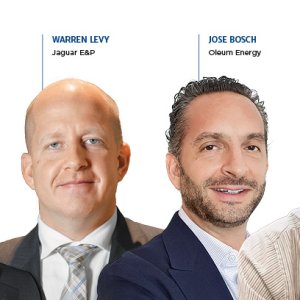
Onshore Outlook: What to Expect from Mexico’s Onshore Fields
Insecurity in Mexico remains among the top issues for the onshore segment and while the government needs to step up and strengthen security, onshore operators also need to understand what they are getting into, panelists at the Mexico Oil & Gas Summit 2018 said on Thursday at the Sheraton María Isabel hotel in Mexico City.
“The Mexican government needs to take a bigger role in guaranteeing security for private companies, whether they are national or international. Land owners should benefit but should not hold up business,” said Steve Hanson, President and CEO of International Frontier Resources and Director of Tonalli Energía, during a morning panel on Day 2 of the exclusive event.
Glyn Jones, General Manager of Petrofac Mexico, added that the onus is on operators to know the landscape. “Working with landowners in Mexico is complicated. There are also sindicato (union) implications, which introduce specific hurdles. Every operator interested in performing activities in onshore Mexico needs to understand the conditions that it will face after winning a contract with CNH,” Jones said. “Safety is not a culture that is well-positioned in the country. Financial risk is a real issue that every operator must face and project management is also complex and needs to be more functional.”
Petrofac has been operating in Mexico for about six years, Jones said, and is the first company to successfully complete a CIEP migration process with CNH. It has Production Sharing Contracts (PSCs). “We have two fields in Tabasco and have invested over US$1.2 billion since 2012,” he added.
David Enríquez, Energy Partner at Goodrich, Riquelme y Asociados, and the panel’s moderator had earlier set the stage for the discussion, hinting at the hurdles that remain in a newly opened landscape. “Onshore Mexico faces many challenges. Although the timelines for developing these projects are shorter than offshore, operators need to consider key factors to operate safely while being environmentally friendly,” he said
In addition to security, the panelists listed dealings with landowners and unions as main challenges that remain, even after the Energy Reform. “PICO Cheiron started operations in Mexico before Energy Reform, facing hurdles like insecurity in Tamaulipas, which forced us to work with very few resources and to be very strict with our production activities,” said Roberto Mc Leod, General Manager of Petrolera Cárdenas Mora, a Cheiron Company. “Cuota Sindical (Union Quota) is something that nobody has been able to control, along with vandalism. Mexico should grant security to companies, not the other way around,” he said.
PICO Cheiron has been working in Mexico for five years and holds the Altamira CIEP, which it is working toward migrating to a PSC, Mc Leod said, adding that Cheiron recently won the Cardenas-Mora farmout and initiated operations last March with PEMEX.
Hanson also stressed the need to focus on local talent to ensure success. “We have been proactive with local communities. We need to work with local contractors to be more successful. So far we have provided indirect jobs to over 150 people.” He also pointed out that, “we do not take jobs, we create the right conditions for local, skilled people to work with us. Understanding how we should work here is essential; we provide training for our Mexican crews based on international best practices to streamline all our processes.” Jones agreed: “Developing competitive local content conditions is clearly a noticeable component in Mexico’s oil and gas industry.”
Regarding current onshore infrastructure, Javier Zambrano, CEO of Jaguar E&P, said that, “the wells and the production lines are not well-mapped. We need to care for the environmental baseline that PEMEX left behind and we need to document all things the NOC failed to do, to be able to assume real risks and be prepared as best as possible for every factor that could delay our operations, such as insecurity.” Zambrano added that, “dealing with ASEA should not be difficult, it should be productive, and also with the other regulators. The permitting time it takes for regulators to revise and approve everything is quite long and ineffective. Regulators should improve these timelines so we can be more competent with our projects.”
Ultimately success will depend on cooperation. “Policymakers, regulators and the industry in general need to understand each other and adapt to changing conditions to be able to boost, not only the country’s onshore arena, but the entire oil and gas industry,” said Enríquez.














